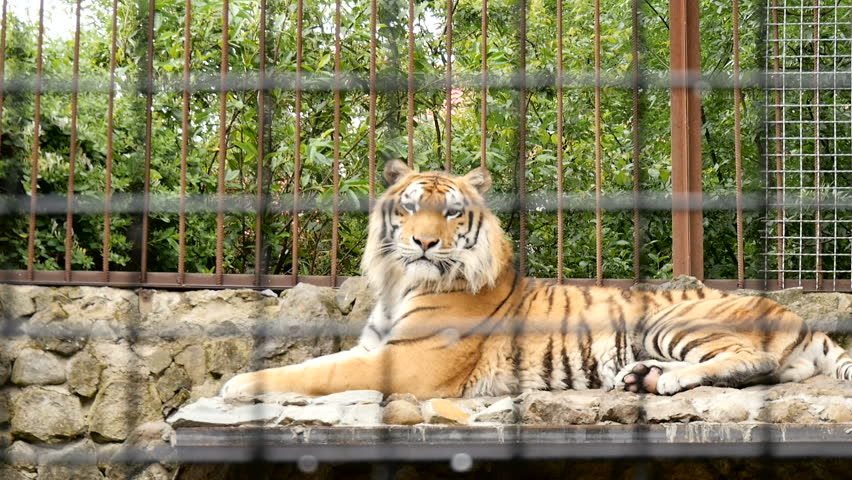By: Dr. Akhtar Nasim, Sr. Principal Scientist CSIR-CRRI & Prof. ACSIR (University) & Consulting Editor ICN Science & Tech
NEW DELHI: Humans have been blatantly capturing and displaying animals since 3500 BCE in Egypt. Where the kings kept hippos, elephants, baboons, and different species of large cats in the zoos for their entertainment. The longest continuously operating zoo in the world is the Vienna Zoo, for more than 260 years.
Zoo authorities work hard to save species that are threatened in the wild, they take animals that are on the verge of extinction, breed them in captivity, and then reintroduce them back into the wild. But, reintroducing them back into the wild is questionable, as inside the zoo, food is provided to the animals on time without any struggle, which in turn deprives the animals to develop their hunting skill, which becomes the biggest problem for their survival in the natural environment. Besides this, these animals are also not able to develop their communication skill, which has been described below;
- Effect of good vibration on animals
Animal communication is a complex mechanism of sending and receiving signals, the neurobiology of signal detection and processing and the behaviours of animals creating and responding to encoded messages. Alongside visual signals or pheromones exists another major communication channel that has been rather neglected until the recent past: air & ground borne vibration. Animals also create vibrational waves for mate location and identification, courtship and mating, maternal care and sibling interactions, predation, predator avoidance and foraging. This successful communication depends on good vibration created by one animal for other animals. In the forest, these two way communications (between one animal to another) are very common to identify each other. Scientist’s research says that vibrational communication is an ancient sensory mode, one that is widely used throughout the animal kingdom. From the Jumbo-size elephants to a tiny insect talk to each other using vibrational skills for different purposes, i.e. from mating and hunting to solving territorial disputes and warning predators away.
But in zoos, animals are kept in a limited space for unlimited time. In fact, zoos are a different world as compared to the forest. Once the wild animals are kept inside any zoo, within months, these animals adopt the new environment and forget their all old activities. For example, if a signal is being sent by an animal to another through vibration, the signal is received but due to quarantining the animals, they are not able to respond appropriately. As a result, communication through a good vibrational process gradually gets killed and animals stop sending the massage to each other, they forget courtship and mating, maternal care and sibling interactions, predation, predator avoidance and foraging. This is the biggest loss of the animals, which are kept in quarantine inside zoos.
Human must search another way to save extinct animals. They should look for an alternative way for reproducing them, where they can grow and survive without killing their natural communication skill and their freedom of expression. Animal’s population can be increased inside zoo, but the question is, can these newborn survive in the natural habitat, without natural communication skills, which are not able to develop in a confined environment of the zoo?
- Effect of bad vibration on animals
On the other hand, anthropogenic activities interfere with these communication channels causing bad vibrations i.e. due to construction of road, traffic movements inside forest and passing of new underground metro or rail from forest or zoo. This vibration and sound leads to confusions and convulsions in animals. Wild and captive animals both respond differently to bad vibrations. In the case of wild animals, sometimes, bad vibration leads to fatal fights and it forces some animals to move and relocate and sometimes resulting in deaths.
Case study 1: 8 lane highway passage through Ranthambore National Park, Sawai Madhopur – Rajasthan
In Sawai Madhopur (Rajasthan), where numbers of tigers are residing are 67 in Ranthambore National Park. This area falls under tiger reserve. Eight lane highway project is proposed to pass through the migratory path of tigers. Tiger is an endangered species and their total number is approx 3500±200 in the world, out of which 2600 ±200 are in India. When a tigress gives birth to a cub, male tiger leaves the cub and the mother for approximately one year. After one year, the male tiger again comes near the female tiger for mating, at the same time, the cub moves away from mother’s place, (otherwise cub will be killed by father or male tiger ). Cubs are bound to leave the place and search their own territory. In the present situation, there is no more area for young cubs to claim a place of their own in the Ranthambore National Park. Hence, these cubs move through the safe corridors and search some other forest nearby to claim their territory. The journey will not be safe for young cubs, if a highway passes through their migratory path.
Case study 2: High speed train passage under Delhi Zoo
NCRTC-Regional Rapid Transit System (RRTS) tunnels, speed 180km/h passing under Delhi zoo area. There are two tunnels (up & down) passing, the depth of the tunnel varies between 19–24m in zoo area, the tunnels are passing under the area where rhinoceros, deer, bear, birds, bison, white tiger and reptiles are kept. The noise and vibration caused by the trains would have a detrimental effect on the animals health and behaviour, as animals are highly sensitive to noise and vibration.
So, my argument is that it is good to associate with any such efforts which are being put to save the endangered animals, but it is also equally important to provide them safe habitats, so they could enjoy their real and natural life freely.




